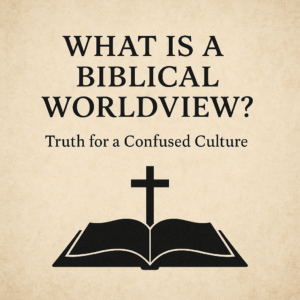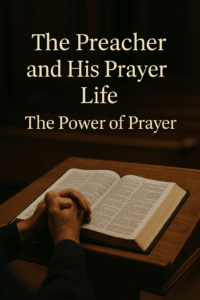⏱️ Estimated Reading Time: 5 min read
 I have several study Bibles at home. Each of these study Bibles seems to have its unique focus with some providing commentary and articles based on a specific theological perspective with others simply providing a plethora of background study material such as maps, charts, and tables. Given the great expense involved with purchasing a Bible (even more if you go for the leather bound option), deciding what to invest in and what to take a pass on can be quite important.
I have several study Bibles at home. Each of these study Bibles seems to have its unique focus with some providing commentary and articles based on a specific theological perspective with others simply providing a plethora of background study material such as maps, charts, and tables. Given the great expense involved with purchasing a Bible (even more if you go for the leather bound option), deciding what to invest in and what to take a pass on can be quite important.
Recently I had the pleasure of receiving a copy of the second edition of The Jewish Study Bible which is based on the Jewish Publication Society’s TANAKH translation. Some may ask, especially Christians as to why there would be a need to have a Jewish Study Bible as after all, will not any commentary provided be devoid of a focus on the gospel and on Jesus? This is a valid question and concern. In fact, the Jewish Study Bible of course does not contain the 27 books of the New Testament. What it does contain are the Torah (first 5 books of the Old Testament), the Nevi’im (the prophets), and the Kethuvim (the writings). The arrangement of these books is provided in the traditional manner and will be a bit foreign to those more familiar with the usual order found in most Christian Bibles, unless of course you are utilizing a chronological bible.
So what is this Jewish Study Bible all about? The editors comment that “If anything marks Jewish biblical interpretation, it is the diversity of approaches employed and the multiplicity of meanings produced. This is expressed in the famous rabbinic saying; “There are seventy faces to the Torah” (Num. Rab. 13.15 and parallels), meaning that biblical texts are open to seventy different interpretations, seventy symbolizing a large and complete number.” They go to note they “hope that Jewish readers will use this book as a resource to better understand the multiple traditions that have informed, and continue to inform, their tradition.” The hope is also stated that the “Jewish Study Bible will serve as a compelling introduction for students of the Bible from other backgrounds and traditions, who are curious about contemporary academic Jewish biblical interpretation.”
Where the real strength and area of interest lies for this study Bible is in the copious amount of essays it provides on a number of valuable areas such as Midrash and Jewish Exegesis, concepts of purity in the Bible, daily life in Biblical Times, Biblical Calendars, Biblical Festivals and Fast Days, Jewish Customs, the History of Israel in the Biblical Period, languages of the Bible, reading Biblical Poetry, reading Biblical Narrative, and reading Biblical Law. These are just a snippet of the many essays provided. In addition to these informative essays are a number of tables, charts, and maps that are of benefit.
I am not familiar with the background of all the essay contributors; however, after doing a quick search on several of them, in particular the editors, they are all accomplished in their respective fields/areas of study and that becomes apparent in their essay contributions. I particularly appreciated Marc Zvi Brettler’s discussion of the meaning of the term Torah, in particular its broader application in the Bible outside of how it is typically understood, namely the mistaken idea that Torah speaks only of what is contained in the Mosaic Law. He aptly notes, “the Torah should not be typified as a book of law. The Hebrew term torah also means “instruction” or “teaching” as in Proverbs 1.8, “My son, heed the discipline of your father, / And do not forsake the instruction [Heb torah] of our mother.” Teaching is not confined to law; indeed narratives or stores are as effective a medium of instruction.”
As one who has studied of late the Feasts of the Lord, I found the essay provided by Baruch Levine to be of interest. This essay walks the reader through the Sabbath, the New Moon, the Annual Festivals and Pilgrimages, and the Annual Fast Days. Despite studying these subjects in great depth over recent months, Levine provided some additional points of insight that will prove to be invaluable as I continue to explore the importance of these appointed times of the Lord and how they apply to believers today.
There is much to enjoy in this study Bible. For Christians who might shy away from such a study Bible, I would encourage them to set aside any preconceived ideas one might have of this work being of no relevance. There certainly are points of discussion to which Christians will have disagreement. This is after all a study Bible that does not contain the rest of the story, namely the coming and the work of the Messiah. However, there is a great deal of helpful information that will serve to inform the Christian’s study of Scripture, in particular the helpful historical and cultural information, as well as gaining an understanding of various points of language and application, such as the aforementioned perspective on how the word Torah is defined and used in the Old Testament. I know this is a study Bible that I will find highly useful and it is one I can definitely recommend.
I received this for free from Oxford University Press and the opinions I have expressed are my own. I am disclosing this in accordance with the Federal Trade Commission’s 16 CFR, Part 255 : “Guides Concerning the Use of Endorsements and Testimonials in Advertising.”




